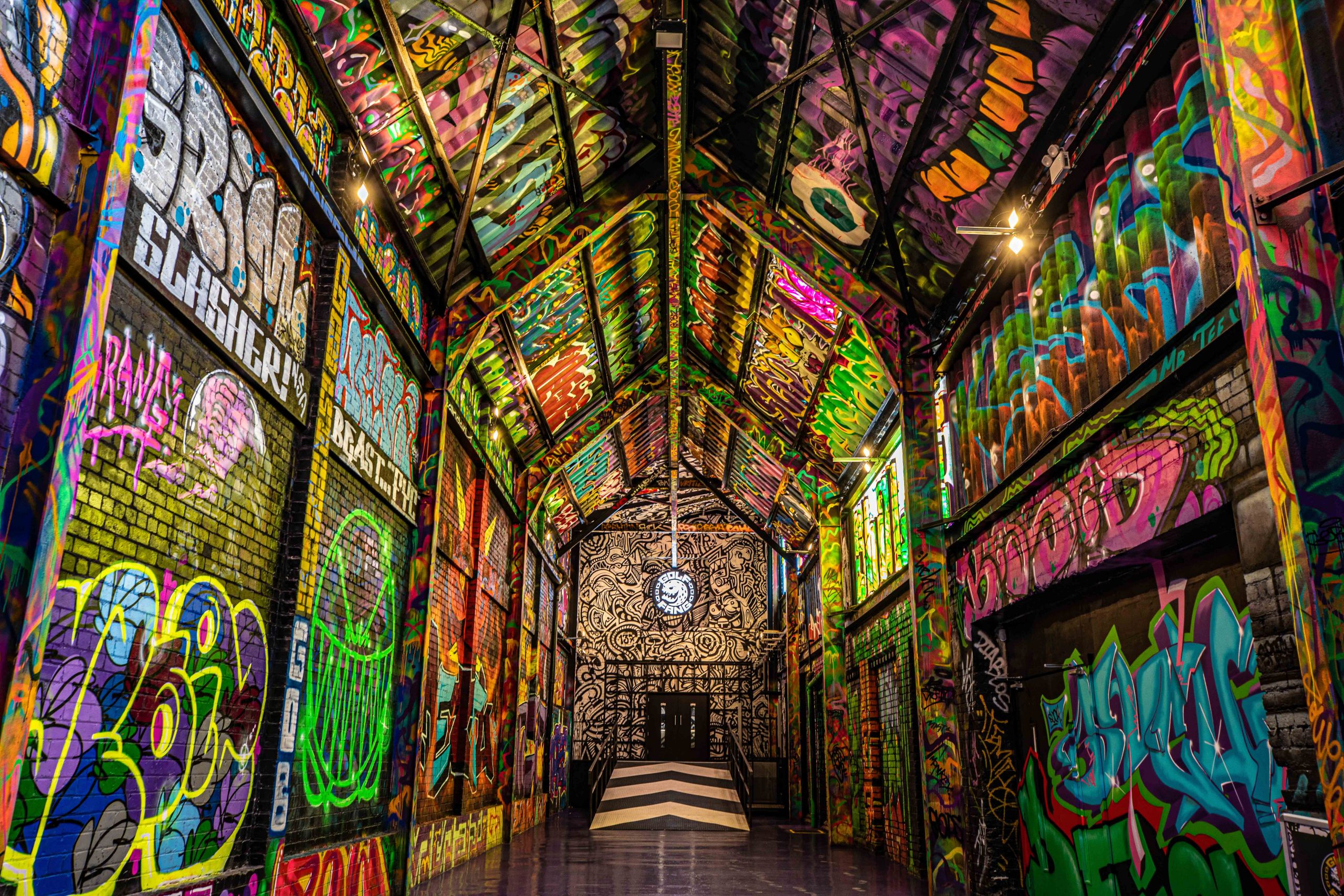Who are Big Fang Collective?
Over the last few months I’ve been working with Big Fang Collective on their incredible Golf Fang venues around the UK. They approached me looking for some updated imagery, that utilised my expertise in showcasing the unique characteristics their venues are known for in the most challenging lighting conditions.
Huge premises, often well over 20,000sq ft, covered floor to literal ceiling in graffiti by a range of talented artists. 18 hole crazy golf courses of the like you’ve never seen before! Full size school buses, giant claw machine games, plane fuselages, giant swan pedalos and television sets. These are but a small selection of props the holes are built around. Then you have the bar areas themselves and seating for the food served by their external partners.
My Process
Equipment
When shooting a venue like a Golf Fang site, I’ll use a range of lenses. From a 16-35 wide angle, to an 85mm and 70-200 telephoto. You want to be able to give a sense of scale to a site where the huge space and the graffitied ceilings and walls are such a feature. This is which is where the wide-angle is invaluable. The attention to detail though despite its size, means also utilising longer focal lengths. Pulling in tighter allows you to cut through the space and focus on small details that hero the thought and design genius of the site. It allows you to draw the customer into the venue and direct their attention to intricate details they’ll want to look out for themselves.
I’ll often walk an entire site several times before even unpacking my kit. I need to get a really clear feel for the space and to start looking for details before I’m focussed on camera settings. It’s so easy with a 25,000ft building not to notice something small. It’s really important to work methodically and plan how you intend to document your way around the space.
Lighting
Venues of this size are always challenging to photograph. The super high warehouse ceilings with virtually no natural light mean lots of places for light to struggle to find no matter what you do. There’s also fluorescent lighting, ultraviolet (UV), light projection screens and coloured LEDs all in the same space. Getting an accurate colour balance therefore, as well as lighting the room evenly, can be quite the challenge.
Too much artificial light from myself via strobes will cause the UV paint and projected lighting to largely disappear. Not using any at all, risks some of the coloured LED’s spilling that light onto the whole scene and causing odd colour casts. Therefore its a balancing act of using what’s available in the scene, and adding in additional lighting where necessary.
Settings and Post-Production
Long exposures in-camera can also have benefits and risks. Not all light works the same or interacts with the camera equally. While the long exposure allows a coloured LED to pop a scene with colour, a brighter white light or fluorescent bulb in the same shot, can end up blown out entirely. I’ve therefore got a lot of different techniques to employ at once. A lot of post-production is also required to take the raw file to a final product that wows as much as the Golf Fang does in real life.
One typical final image delivered to the client might involve multiple exposures of a scene at the venue. These are then combined in post production to allow the best parts of each to feature. Significant post-production then is undertaken to give a realistic but impressive final shot.
Looking for a photographer?
If you’re looking for a commercial photographer anywhere in the UK, Get in touch today to check our availability. Let’s talk about how Oliver Dixon Photography can help your brand stand out.





































Leave A Comment